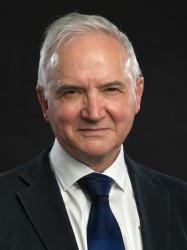BibTex format
@article{Killingley:2022:10.1038/s41591-022-01780-9,
author = {Killingley, B and Mann, AJ and Kalinova, M and Boyers, A and Goonawardane, N and Zhou, J and Lindsell, K and Hare, SS and Brown, J and Frise, R and Smith, E and Hopkins, C and Noulin, N and Londt, B and Wilkinson, T and Harden, S and McShane, H and Baillet, M and Gilbert, A and Jacobs, M and Charman, C and Mande, P and Nguyen-Van-Tam, JS and Semple, MG and Read, RC and Ferguson, NM and Openshaw, PJ and Rapeport, G and Barclay, WS and Catchpole, AP and Chiu, C},
doi = {10.1038/s41591-022-01780-9},
journal = {Nature Medicine},
pages = {1031--1041},
title = {Safety, tolerability and viral kinetics during SARS-CoV-2 human challenge in young adults},
url = {http://dx.doi.org/10.1038/s41591-022-01780-9},
volume = {28},
year = {2022}
}

